
国际能源署IEA发布《2016年世界能源投资》报告,2015年全球能源投资达到1.83万亿美元,是2010年以来全球能源投资的最低数额,比2014年下降8%。
投资是能源系统的生命线,决定着供应、减排和能源需求的长期走向。目前的趋势显示,投资者将面临新的机遇和挑战。这主要是由以下三个原因造成的,首先是宏观经济的不确定性,宏观经济结构的变化影响着需求模式的改变;其次,能源行业面临技术变革的加快;再次,较低的能源价格、愈发激烈的行业竞争将重塑投资行为。
受油气开支下降的影响,2015年全球投资活动减弱。值得一提的是,科技发展、强有力的政策支持和良好的资源市场促进了对可再生能源的投资。
首先来看一张全面的、直观大图。
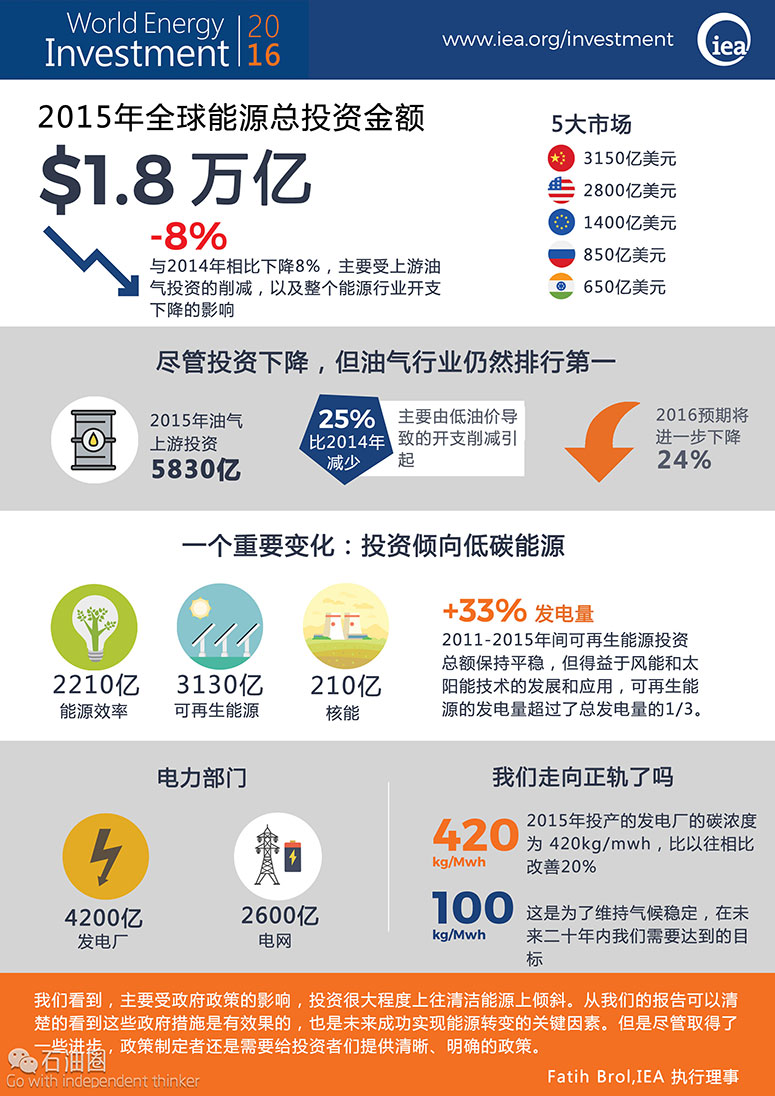
上图展示了2015年全球及5大市场的投资总额,同时展现了全球的能源发展趋势。下面,是IEA报告的具体内容,小编跟你一起看。
投资流向体现了全球能源系统的再定位,下图展现了去年的全球能源投资情况。
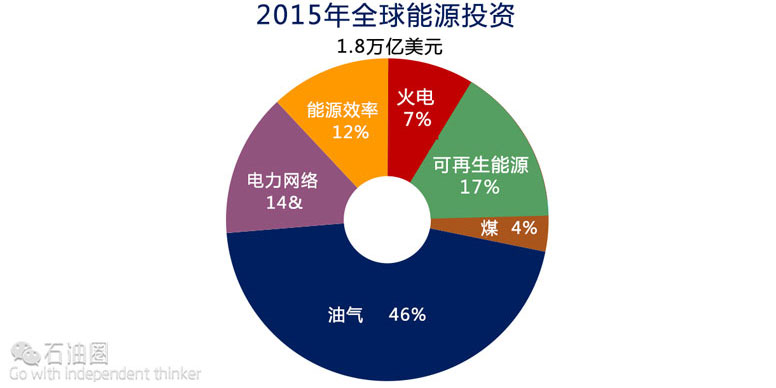
2015年全球能源投资总额下降8%,主要是由于化石燃料方面的投资大幅度下降(下降2000亿美元),但可再生能源、电力网络和能源效率方面的投资比率增大。在全球1.83万亿的能源投资总额中,油气投资占比达到46%;可再生能源投资占17%;火电发电厂投资占7%;电力输配网投资占14%;能效投资占12%;煤炭开采和运输投资仅占4%。
2015年中国能源消耗达到历史新高,受其影响中国重返全球第一大能源投资市场。同时由于油气投资活动减弱,2014年排在首位的美国投资额仅为2800亿美元,比上年减少750亿美元。下图为2015年全球部分市场的能源供应投资额。
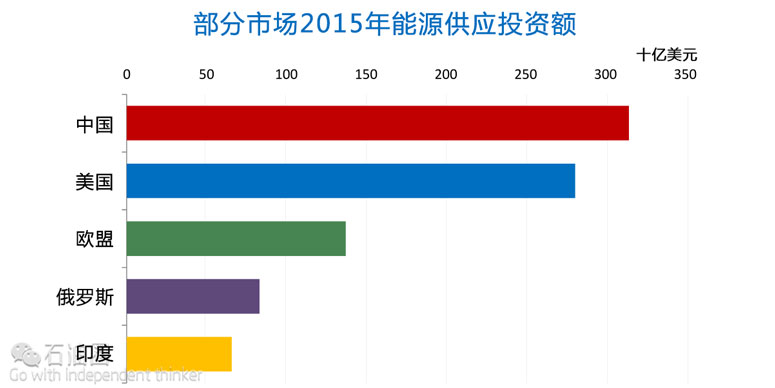
下图是2010-2017年全球上游投资金额表,从图中可以看出,上游油气行业遭遇前所未有的投资削减。而且首次发生了连续三年投资下降的情况,成本紧缩、效率提升、活动水平减低都可能是其原因。
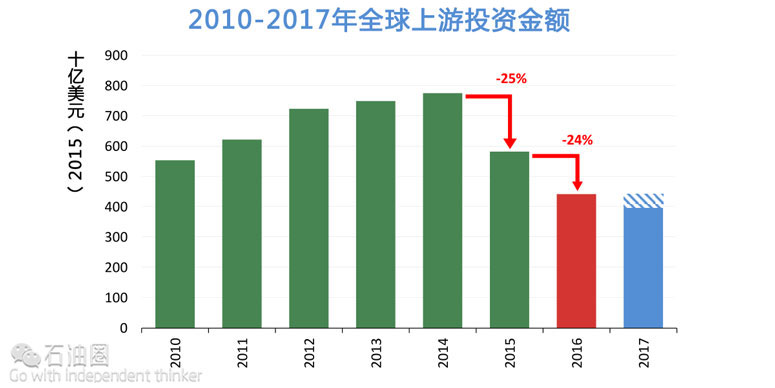
不同公司类别,对上游油气的投资份额有所不同,下图为美国独立公司、国际大石油公司、私营公司、国家石油公司四类油企的上游油气投资份额表。
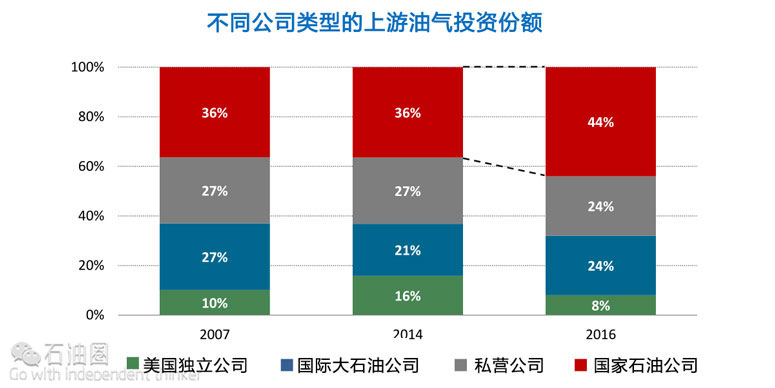
全球上游投资中,国家石油公司的投资份额创下新高。中东和俄罗斯的上游投资仍保持稳健,对北美页岩和全球海上开采的投资受挫最为严重。
2011年以来全球在可再生能源发电投资基本平稳,但是由于可再生能源成本的下降,每年新增的可再生能源发电量逐年增加,2015年超出2011年33%。可再生能源发电量可满足2015年全球增长的电力需求量。风能发电势头最猛,在2015年增长了35%,海上风力发电的增长创下以往记录。
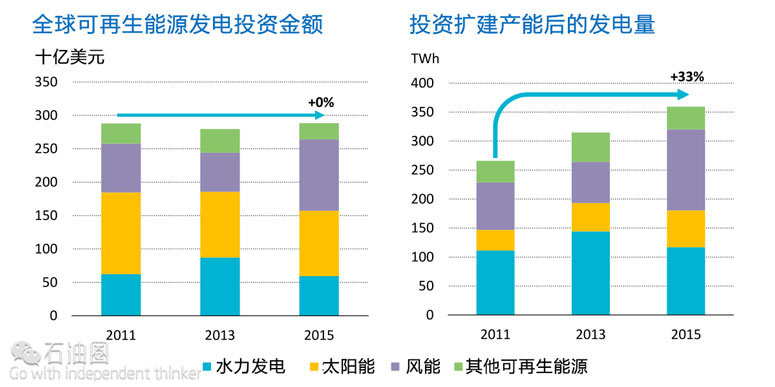
电力网络方面,电网级电池投资增长最快。从下图可知,从2010年起,对电网级电池储能的投资已经翻了10倍,大部分都用于了电网的完善。但是储能投资仅占电网投资的0.4%,还有很长的路要走。
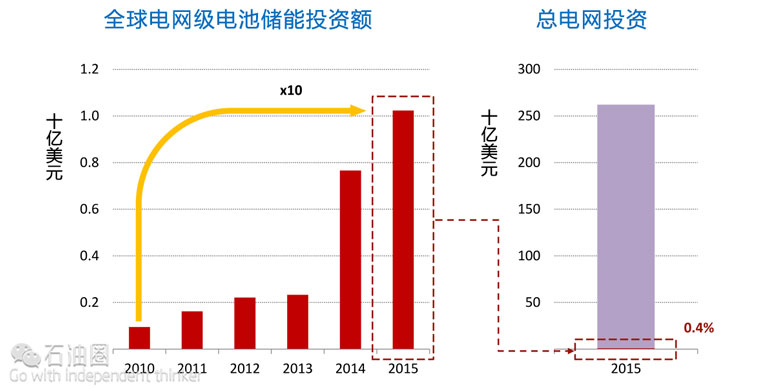
亚洲更倾向于对煤电的投资。下图为2015年亚洲市场煤电和天然气发电的投资金额。在全球煤电投资总额中,亚洲市场占了85%,同时,亚洲修建1GW发电厂的投资金额;而北美和中东由于具有较好的天然气发电基础设施,因此更倾向于投资天然气发电。
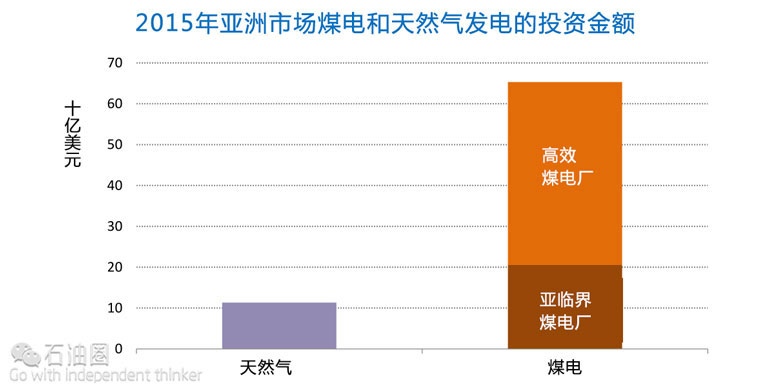
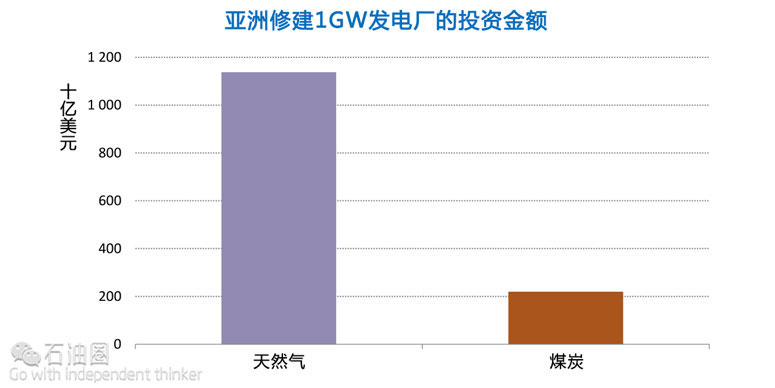
下图为2000-2015年开工的核电工程,对于全球核电投资水平的稳定,中国发挥了主要作用。
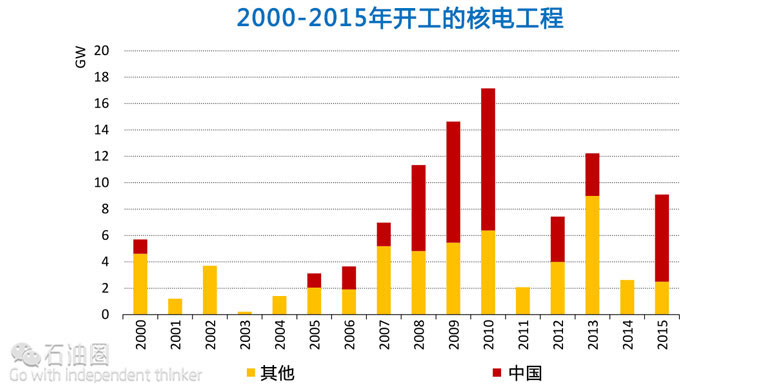
总的来说,2015年全球能源投资总额下降8%;油气领域的投资比例下降,可再生能源、能效提升和核能领域的投资升高;整个能源行业大规模的开支通缩将改变燃料与技术之间的竞争格局;上游油气部门前所未有的投资削减正在改变石油生产的格局;发电厂的建设中,可再生能源发电厂的投资金额超过总额的2/3,投资所带来的可再生能源发电量可满足全球电力需求的增长。国际能源署认为,“世界能源体系正在迈向低碳社会,但成为关键的技术投资需要进一步增加”。
来自/IEA 译者/周诗雨 编辑/李倩
Investment is the lifeblood of the energy system, which determines long-term trends of supply, emissions and fuel demand.Investors face new challenges and opportunities from recent trends.Macroeconomic uncertainty and structural change affects demand patterns.The energy sector faces accelerated technological change.Lower energy prices and increasing inter-fuel competition reshape investment.Global energy investment declined in 2015, mainly due to lower oiland gas spending.Share of renewables in investment boosted by technology progress,strong policy support and growth in good resource markets.
An 8% reduction in 2015 global energy investment results from a $200 billion decline in fossil fuels, while the share of renewables, networks and efficiency expands.
Energy supply investment in 2015, selected markets.Top five markets comprised over half of globalenergy supply investment.Boosted by record power sector spending, China regains its position as top investment market, while the US declines due to sharply lower oil and gas investment.
Energy efficiency investment rose 6%, bucking the trend despite lower energy prices
Lower oil prices can reduce energy efficiency spending. But government policies remain the key driver, a warning against complacency.Annual improvements in average fuel economy of new vehicles.
Unprecedented wave of investment cuts in the upstream oil and gas industry.Global upstream capital spending 2010-2017.Cost deflation, efficiency improvements and reduced activity levels might leadfor the first time to three consecutive years of investment decline.
The share of NOCs in global upstream investment reaches an all time high.Share of upstream oil and gas investment, by company type.Upstream investment remains robust in the Middle East and Russia while North.American shale and global offshore spending have been hit most severely.
Renewables investment buys much more electricity.Investment in renewables-based capacity more than covers 2015 global electricity growth. Wind leads, surging 35% in 2015 on economics and record offshore growth.
Global energy investment in 2015 is 8% lower. The share of oil & gas declined, while that of renewables, efficiency and nuclear rose.Massive cost deflation across the entire energy spectrum is reshaping competition between fuels and technologies.Unprecedented cuts in upstream investment are shifting the geography of oil production.Renewables investment accounts for more than two-thirds of power generation and more than covers global electricity demand growth.The IEA will continue to measure investment flows and assess their implications for the global energy sector.
未经允许,不得转载本站任何文章:
-

- Linda
-
石油圈认证作者
- 毕业于南开大学传播学专业,以国际权威网站发布的新闻作为原始材料,长期聚焦国内外油气行业最新最有价值的行业动态,让您紧跟油气行业商业发展的步伐!




 石油圈
石油圈








